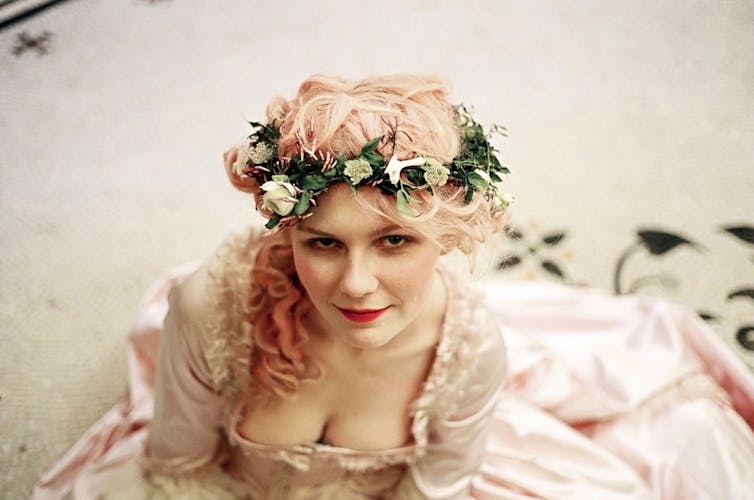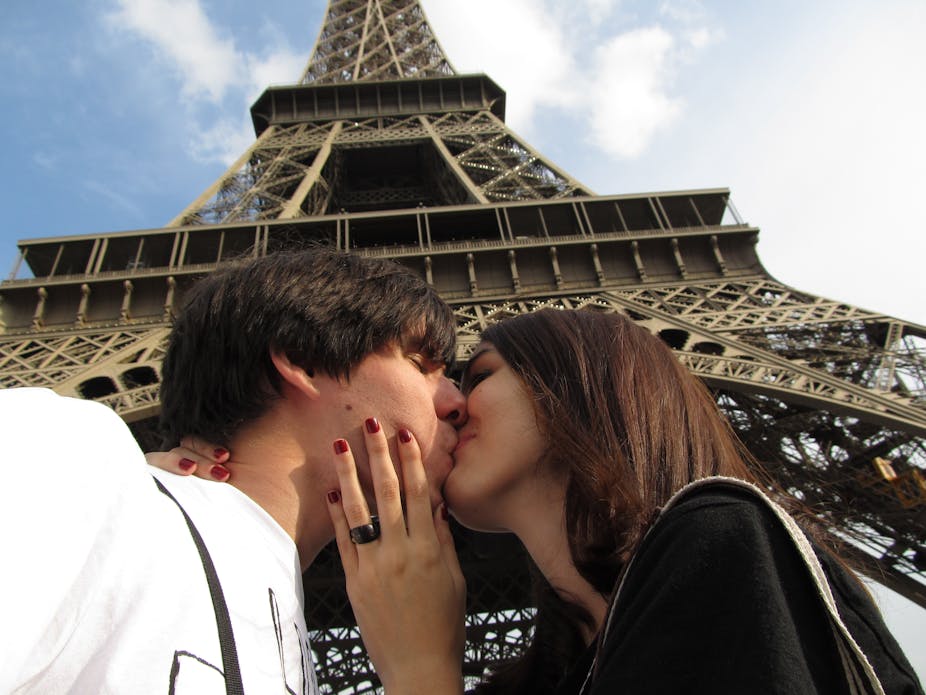Snog, pash, knutschen: there are terms in many different cultures for what we in English call “French kissing”, or kissing with tongues. But why do we associate this kind of intimate kissing with the French? Indeed, why do the French have a reputation (at least in Anglo cultures) for being more sexually daring and uninhibited?
Anyone who’s watched the BBC2 costume drama Versailles (or, like me, struggled merely to get through the trailer) will have been informed that the celebrated court of the Sun King was a place of non-stop sex, intrigue, glamour, and more sex. Success at the French court, it would appear, required an appetite for ambition matched only in size by an appetite for sexual acts considered outrageous for the time. But were French courtiers any more sexually audacious than anyone else? If not, then where does this stereotype of the French court as debauched and dangerous come from?
Probably the most infamous figure of kinky courtly conniving is the French queen Marie Antoinette. Best known for the apocryphal comment “Let them eat cake”, Louis XVI’s consort had her character relentlessly assassinated by bloodthirsty revolutionary critics, who claimed in countless contemporaneous libels, engravings and songs that she (as well as betraying the country to its enemy Austria, her birthplace) organised orgies at Versailles, enjoyed lesbian encounters with her ladies-in-waiting, and even committed incest with her own son.
In fact, Marie Antoinette suffered so many accusations that Stanford University’s French Revolution Digital Archive has a whole section devoted to attacks and libels on her private life. Some historians argue that these attacks contributed to a “pornographic desacralisation of monarchy” that led directly to the executions of the king and queen.

However, such accusations against French courtly women actually came 200 years earlier. We find all of the same motifs of sexual deviance being used in the 16th century to attack the ladies-in-waiting of the French queen mother Catherine de Medici, de facto ruler of France during the Wars of Religion. As the kingdom descended into civil war between the Catholics and Huguenots, Catherine tried to steer a middle ground. But it backfired: each attempt to mollify one party provoked the other, and all sides attacked her inability to achieve peace. She was portrayed as an ambitious, untrustworthy, Machiavellian schemer (unfortunately for her, Machiavelli dedicated his treatise, The Prince, to her father Lorenzo II de Medici).

The obvious next step was to accuse her of sexual deviance. However, since the untimely death of her husband King Henri II in 1559, Catherine permanently adopted severe black mourning dress, which made it difficult to portray her as a stereotypical “lusty widow”. Instead, critics targeted her ladies-in-waiting, accusing Catherine of running a harem made up of young beautiful women whom she could use to seduce influential noblemen. This myth of the “flying squadron” – Catherine’s legendary crack team of sexual pawns – is, of course, nothing more than a heterosexual male fantasy that reduces her tireless negotiations for peace to a tired notion of powerful women using “sex as a weapon”.
Such ideas were in fact as old as literature itself: the Renaissance era, which saw the “rebirth” of the ideals and writings of Antiquity, also revived the misogynist works of writers like Juvenal, whose Satire 6 portrayed wives as so lust-crazed that cuckoldry – being cheated on by one’s wife – was inevitable for all married men.
Foreign imports?
The irony is that the French of the early modern period would not have identified themselves as sexually voracious. Instead they would have pointed the finger at the Italians, who were widely believed to be the importers, via Catherine’s Medici family, of all manner of depraved sexual practices and appetites.
Sodomy was believed by the French to originate in Italy, and while syphilis was known in many lands as the “French pox”, in France it was believed to have been contracted in Italy by soldiers fighting in the Italian wars. Ronsard, France’s most celebrated poet of the Renaissance, wrote obscene poems portraying Catherine’s son, King Henri III, as a pederastic sodomite, engaging in homosexual relations with boys. The poet claimed that this penchant was due to the king’s mother’s Florentine origins. So while Florence was the birthplace of the Renaissance, it also lends its name to the French term for tongue kissing, the “baiser florentin”.
In 1913 the poet Apollinaire wrote about the bitter flavour of love’s kisses:
Amour vos baisers florentins
Avaient une saveur amère
Qui a rebuté nos destins
Translated as: Love, your Florentine kisses/ Left a bitter taste/ Which has undermined our fates.
So if the French thought it was the Italians who were the voracious lovers then what are we to make of shows like Versailles? The truth is, of course, that no one nation or culture can lay claim to any greater proclivity to outrageous sexual practices than any other, although the French appear to have borne the brunt of popular misconception.
Each country’s culture perpetuates myths about its closest rivals that often have no basis in reality and which puzzle those from elsewhere (I remember my bemusement at being informed by English friends of the “fact” that Germans are more likely to monopolise sunbeds on Mediterranean holidays – no other culture shares this belief, by the way). How we engage in sexual activity is a private, individual choice, and nothing about someone’s appearance, accent or origins today will be a reliable guide to what they really get up to in the boudoir.


